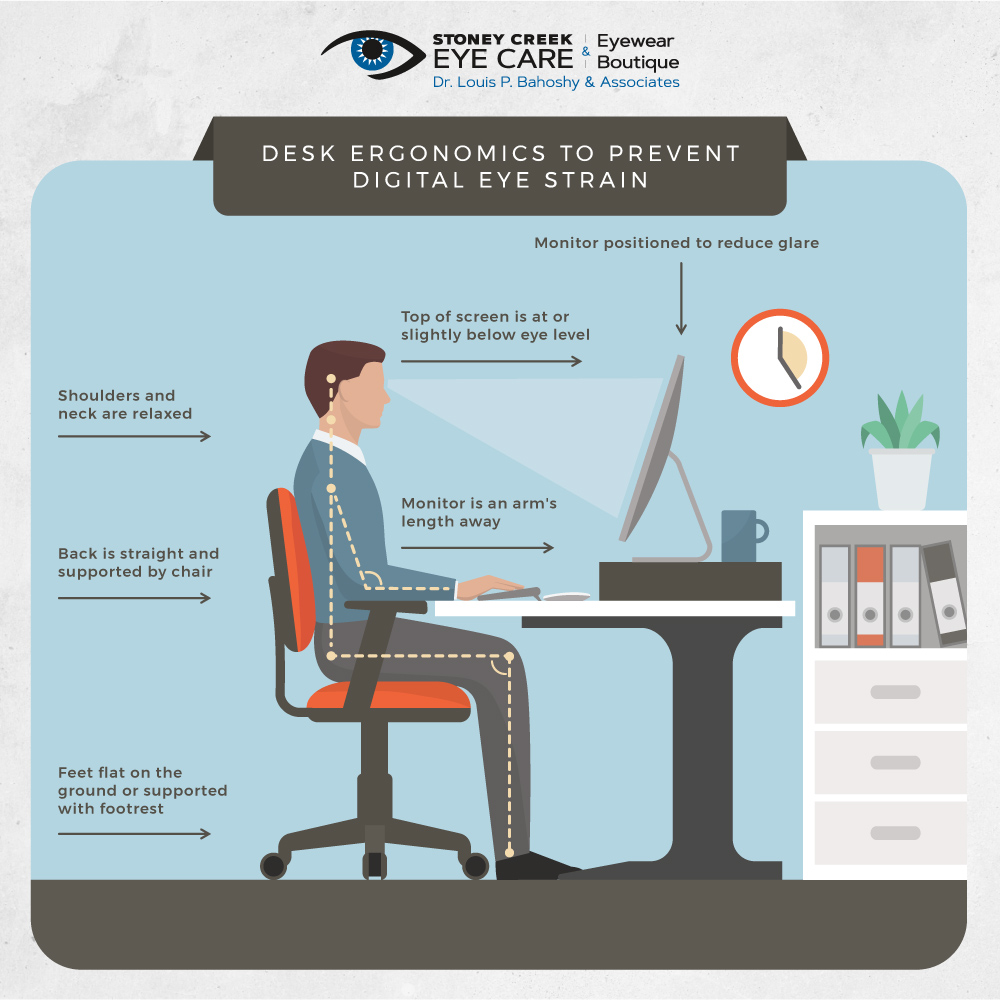You most likely utilize screens for just about whatever-- to work, to relax, or just to keep up with daily life.
Generally, we blink about 15-20 times a minute. Scientists have actually discovered that individuals blink less than half as frequently when they're reading, viewing, or playing on a screen.
The signs normally aggravate the longer you are in front of a screen. Though the most convenient option may seem reducing screen time, for many of us who use computer systems in our office, that's not a possibility. Fortunately exists are other easy actions you can require to make your screentime more comfy and less harmful for your eyes.
Reduce Digital Eye Strain
If this isn't possible in your workplace or another setting, think about using a screen glare filter to decrease the quantity of light shown from the screen. Your blink rate usually decreases when you're doing intensive digital work, so a conscious effort to blink is required to keep your corneas coated.
Palming is generally a meditation method for the eyes. It consists of closing your eyes and placing the centers of your palms over them.
The most important aspect is to focus on your eyes and provide the breaks and adjustments they require. If you have problem pulling yourself far from work, setting a timer can be an excellent way to remind yourself to offer your eyes a break. If you follow these suggestions, you should have the ability to continue working at computer systems without the pressure or discomfort.
Digital Eye Strain: Causes And Solutions
It appears like everyone is looking at a computer screen, phone or other digital device these days. It's causing a widespread issue. Research study sponsored by The Vision Council showed that who routinely utilize computer systems and digital gadgets experience signs of digital eye strain (also known as or ).

During your test, be sure to tell your optometrist how often you use a computer and digital devices at work and in your home. Step how far your eyes are from your screen when you sit at your computer system, and bring this measurement to your examination so your optometrist can check your eyes at that particular working distance.
Try lowering the number of fluorescent tubes set up above your computer system work space if you are troubled by overhead lighting. Glare from light reflecting off walls and completed surface areas, in addition to reflections on your computer system screen also can trigger computer system eye stress. Consider installing an anti-glare screen on your screen and, if possible, paint brilliant white walls a darker color with a matte finish.
Techniques To Help Protect Your Eyes From Digital Eye Strain
AR finishing reduces glare by reducing the quantity of light showing off the front and back surfaces of your eyeglass lenses. If you have not already done so, replace your old tube-style screen (called a cathode ray tube or CRT) with a flat-panel LED (light-emitting diode) screen with an anti-reflective surface area.
Even if this flicker is invisible, it still can contribute to eye stress and fatigue throughout computer system work. To reduce eye pressure, make sure you utilize excellent lighting and sit at a correct range from the computer system screen. Issues due to flicker are even more likely if the refresh rate of the monitor is less than 75 hertz (Hz).
When selecting a brand-new flat panel display, choose a screen with the highest resolution possible. Resolution is connected to the "dot pitch" of the screen. Usually, displays with a lower dot pitch have sharper images. Choose a display with a dot pitch of.28 mm or smaller. Also, select a relatively large display.
Tips To Prevent Digital Eye Strain
Changing the screen settings of your computer can assist decrease eye pressure and fatigue. If it looks like a light source, it's too brilliant.
Eyestrain: Causes, Tips For Prevention, And Treatments
A progressive lens may have a large middle area for computer system use. Talk with your eye health care provider about your everyday computer system usage and vision requires to discover which type of lens will work best for you.
From mobile phones to tablets to computers, the frustrating majority of Americans (consisting of children) utilize screens for several hours each day. Telecommuting, remote learning, and social networking have become the norm thanks to advances in innovation. While innovation is no doubt good for productivity and remaining linked, it can cause digital eye strain.
How To Combat Digital Eye Strain
Your wrists should not rest on the keyboard when typing. To prevent eyestrain, try to rest your eyes when using the computer system for long durations. Rest your eyes for 15 minutes after two hours of continuous computer use. Also, for every 20 minutes of computer system watching, check out the range for 20 seconds to allow your eyes a possibility to refocus.
Blinking keeps the front surface of your eye moist. Routine eye examinations and proper watching habits can assist to avoid or reduce the development of the signs associated with Digital Eye Pressure.
Tips To Prevent Digital Eye Strain
Digital eye pressure, dry eyes, inflammation and pain can be the outcome of straining our eyes in order to concentrate on small print, poor lighting, incorrect usage of devices through holding them at the incorrect angle or too far from our eyes, blue light given off by digital gadgets or prescription glasses that is not intended for viewing the mid-distance variety of computer systems and electronics.
Most importantly, screen time need to be limited and sprinkled by frequent breaks. For those who can not minimize their device use, there are other ways to lessen the effect of screen time on your eyes. Eye, neck, head or shoulder pains are warning signs that digital eye pressure may be happening.
Blue Light Exposure - Eye Strain From Your Computer
Prevent lighting directly behind or above a computer screen. Don't use a light pointing at the screen as this might develop glare.